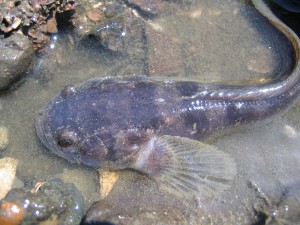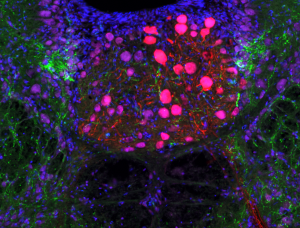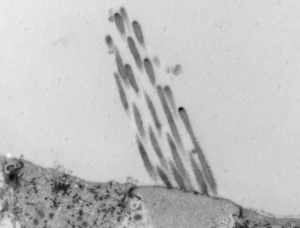Neural Substrates for Modulation of Audition and Acoustic Behavior in a Vocal Teleost
Like humans, songbirds and frogs, certain fishes also use sound to communicate to one another, which includes the all important purpose of finding a mate. In order for courtship to be successful, both the sender and the recipient of the love song must be “tuned in” and motivated to respond in an appropriate fashion. The plainfin midshipman fish is an exceptional model organism to investigate how hormones and other chemicals interact in brain circuitry necessary for proper auditory-driven social function.
General research questions and methodologies:
Using fish as model systems, my lab employs a combination of evolutionary/systems neuroscience with a cellular and molecular approach in order to identify neurochemical interactions in circuitry underlying auditory-driven social behavior, mechanisms of steroid-induced neural plasticity, and sex differences in brain and behavior. These studies largely focus on vocal, auditory and neuroendocrine circuits that are conserved across vertebrates. We utilize quantitative multi-fluorescent immunohistochemistry combined with neuroanatomical tract-tracing, brightfield, epifluorescence, confocal, and transmission electron microscopy, and gene expression studies using RT-PCR, real-time PCR and in situ hybridization. Behavioral studies are conducted at the UC Davis Bodega Marine lab, Friday Harbor Laboratories and at field sites on the Hood Canal, WA, in collaboration with Dr. Joe Sisneros (U. Washington).










